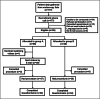Using Information Videos to Improve Patient Satisfaction in Endoscopy: A Prospective Service Improvement Project
- PMID: 35518531
- PMCID: PMC9065946
- DOI: 10.7759/cureus.24108
Using Information Videos to Improve Patient Satisfaction in Endoscopy: A Prospective Service Improvement Project
Abstract
Background: Endoscopy is a rapidly developing discipline with new techniques and procedures being introduced each year. The consenting process is central to patient perception; using information videos as additional tools to aid consent and improve the quality of care in endoscopy is not well established. Our aim was to develop, implement and validate the use of patient educational videos to improve patients' satisfaction and experience in endoscopy.
Methods and analysis: This was a prospective service quality improvement study. Eligible patients were invited to watch the educational videos in addition to standard practice. We compared this group with a matched cohort of patients who were receiving standard care of postal information leaflets. Patient satisfaction was measured through the validated Gastrointestinal Endoscopy Satisfaction Questionnaire (GESQ).
Results: Patients in the intervention group scored four questions relating to pre-procedural information significantly higher than the control (p=0.038). The total mean GESQ score was also higher in the intervention group compared to the control, however this was not statistically significant (p=0.397). The intervention group had significantly lower cancellation rate (4%) compared to the control group (20%), p=0.023.
Conclusions: Patients who watched educational videos were more satisfied with pre-procedural information in the consenting period than those who did not. Further research is still needed to determine if they reduce patient anxiety. Meanwhile, it would be appropriate to implement these videos into routine practice as a cost-effective method of improving patient satisfaction.
Keywords: endoscopy intervention; gastroenterology and endoscopy; patient consent; patient counseling; video feedback.
Copyright © 2022, Broder et al.
Conflict of interest statement
The authors have declared that no competing interests exist.
Figures





Similar articles
-
The gastrointestinal endoscopy satisfaction questionnaire captures patient satisfaction as a key quality indicator of gastrointestinal endoscopy.Eur J Gastroenterol Hepatol. 2020 Jul;32(7):832-837. doi: 10.1097/MEG.0000000000001764. Eur J Gastroenterol Hepatol. 2020. PMID: 32472814
-
Assessment of the Quality of Outpatient Endoscopic Procedures by Using a Patient Satisfaction Questionnaire.Curr Health Sci J. 2019 Jan-Mar;45(1):52-58. doi: 10.12865/CHSJ.45.01.07. Epub 2019 Mar 31. Curr Health Sci J. 2019. PMID: 31297263 Free PMC article.
-
Gastrointestinal endoscopy satisfaction questionnaire is a valid tool to measure patient satisfaction in Asian country.Medicine (Baltimore). 2018 Jul;97(29):e11477. doi: 10.1097/MD.0000000000011477. Medicine (Baltimore). 2018. PMID: 30024523 Free PMC article.
-
Watching Videos of Colonoscopies and Receiving Interpretations Reduce Pain and Anxiety While Increasing the Satisfaction of Patients.Dig Dis Sci. 2021 Feb;66(2):541-546. doi: 10.1007/s10620-020-06186-6. Epub 2020 Mar 19. Dig Dis Sci. 2021. PMID: 32193861 Clinical Trial.
-
Effectiveness of educational videos on patient's preparation for diagnostic procedures: Systematic review and Meta-Analysis.Prev Med Rep. 2022 Jul 5;28:101895. doi: 10.1016/j.pmedr.2022.101895. eCollection 2022 Aug. Prev Med Rep. 2022. PMID: 35855928 Free PMC article. Review.
Cited by
-
Patient satisfaction and safety in the administration of sedation by nursing staff in the digestive endoscopy service: a cross-sectional study.BMC Nurs. 2024 Dec 28;23(1):953. doi: 10.1186/s12912-024-02644-y. BMC Nurs. 2024. PMID: 39731089 Free PMC article.
-
Knowledge, Attitudes, and Practices Among Patients Undergoing Gastrointestinal Endoscopy in the Endoscopy Unit of a Tertiary-Care Hospital.Patient Prefer Adherence. 2025 Jul 5;19:1923-1935. doi: 10.2147/PPA.S524039. eCollection 2025. Patient Prefer Adherence. 2025. PMID: 40636518 Free PMC article.
-
Impact of digital health interventions on patient satisfaction in outpatient gastrointestinal endoscopy: a systematic review.BMJ Open Gastroenterol. 2025 Apr 22;12(1):e001744. doi: 10.1136/bmjgast-2025-001744. BMJ Open Gastroenterol. 2025. PMID: 40262908 Free PMC article.
-
Patient Satisfaction with IBD Undergoing Colonoscopy: A Multicenter Cross-Sectional Study.J Clin Med. 2025 Apr 8;14(8):2562. doi: 10.3390/jcm14082562. J Clin Med. 2025. PMID: 40283393 Free PMC article.
References
-
- Patient-reported attributions for missed colonoscopy appointments in two large healthcare systems. Bhise V, Modi V, Kalavar A, et al. Dig Dis Sci. 2016;61:1853–1861. - PubMed
-
- Effects of video information on precolonoscopy anxiety and knowledge: a randomised trial. Luck A, Pearson S, Maddern G, Hewett P. Lancet. 1999;354:2032–2035. - PubMed
LinkOut - more resources
Full Text Sources
